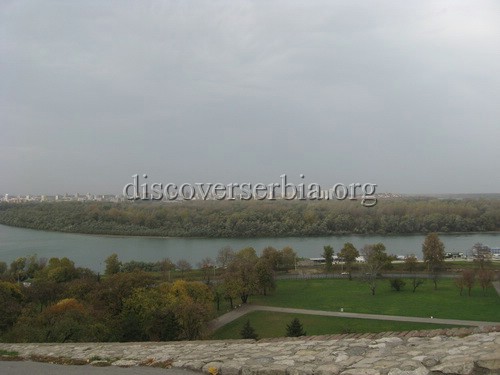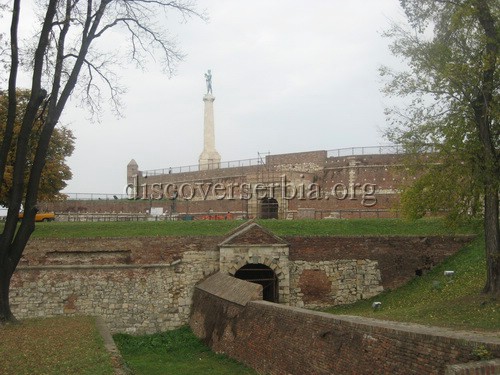Kalemegdan
Kalemegdan is the most important historical monument and at the same time the largest park in Belgrade. It is placed on 125 m high cliff, on the junction of Sava and Danube. Its name is formed from the two Turkish words: Kale - meaning fortress and Megdan – meaning battle.
When the Romans have come in this area, they have found the Celts settlement, Singidunum, today’s Belgrade, but not at the place where is Kalemegdan now. In order to protect the land against barbaric incursions, Romans started to build first fortress walls that have developed during the II century into the real stronghold.



After the division of Roman Empire, the fortress becomes the part of the East Roman Empire under the name Singidon. Built of white stone and situated on the cliff, the fortress had dominated the plain and was named Beli Grad, or Beograd which means "The white city". The oldest scripts in which the name of the city – Belgrade was mentioned, date back to 878 AD.
During the centuries, the fortress and the city have been ruled by Byzantines, Bulgarians, and Hungarians.


Serbian king Dusan and later Lazar tried to take the city, but they had no success. By the stipulated agreement with Hungarians in 1403, King Stefan finally gets Belgrade, but under the condition that the city is to be returned to the Hungarians after Stefan’s death. That was for the first time that Belgrade became the capital of Serbia. During the reign of Dusan and later under the Hungarians, the fortress had been fortified due to the constant peril from Turks. The city has been under the siege from Turks several times. The first time it was in 1440 under the siege of Murat II.


The siege was not successful and Turks have tried again without accomplishment in 1456 under the leadership of Mehmed II the Conquer, who had conquered Constantinople three yeas earlier and therefore destroyed the Byzantine Empire. Belgrade finally collapsed under the siege of Suleiman II the Magnificent in 1521. Kalemegdan fortress have passed for several times from Turkish hands into the hands of Austrians and vice-versa, but in 1807 it was for a short period in the hands of Serbian revolutionaries.
Finally the city was surrendered to the Serbs in 1867, then it has lost its military and strategic position and Kalemegdan begins to develop into a public park. During the First World War almost all buildings in the fortress have been destructed.
Except being a park, the fortress keeps also military and naturalistic museum, zoo, the church Ruzica, and the statue "The Victor" the work of Ivan Mestrovic.


At first the statue was dedicated to the victory of Serbian army in The First Balkan War and the liberation of the southern provinces from 5 hundred years long Turk occupation.
As the World War I started, the posture of the monument has been delayed until 1928, but statue acquires also an additional significance. The statue of a bare man represents the rennaissance of Serbia that came with the end of the conservative Turk and Austrian rule. In the left hand of the statue is a gray hawk which observes the world and watches out that the evil occupation forces do not revive, and in the right hand is the sword as monition. On purpose or not, the man looks toward Vienna.





